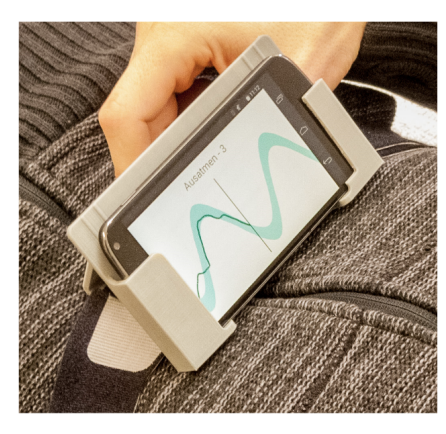Medialogy Project Catalog
Supervision, Aalborg University, 2024
This is a container for semester project ideas for the MED students.
The MED1-6 students should consider classical Signal Processing or AR/VR projects, whereas MED7 and above who take / took the Machine Learning Course (MLME) could also consider Machine Learning projects.
The following MATLAB-based external resource is a good place to think about the scope, content, context, and value of semester projects: MATLAB Excellence in Innovation Projects
Quantum Computing and Quantum Machine Learning
Denmark has a rich history of innovation in Quantum research, and aims to a big player in Quantum Computing. There is a growing community, a national strategy, talent programs, and resources available for the next generation of Quantum Computing and Quantum Machine Learning professionals. Outside of Denmark, startups like Moth Quantum strive to enable the next era of music, gaming and the arts with quantum computing technology.

Image linked from https://refikanadol.com/works/quantummemories/
Objective: Explore the intersection of quantum computing, machine learning and creative computing, focusing on the development of new narratives, interactive computer graphics application, or even wearable and mobile devices.
Key Reference:
Miranda, Eduardo R. 2022. Quantum Computing in the Arts and Humanities, An Introduction to Core Concepts, Theory and Applications. https://doi.org/10.1007/978-3-030-95538-0.
Mobile App for Exploration of Local Resources
Many small business owners struggle for customer attention / discovery in the greater Copenhagen Area. By using recommendation-based algorithms on mobile platforms, can you design and evaluate a mobile app to provide small businesses value over the more common, chain institutions?

Mockup image After Krupa, Maria, 2022, “Impact of gamification on user’s engagement and exploration of local cafes in Copenhagen Greater Area”, Master’s Thesis, Aalborg University Copenhagen
Variations / Ideas
- Gamification: narrative, timer, badges, points, or leader boards
- Evaluation: user engagement, perceived usability.
- Camera-based recognition
- Machine Learning (for MED7 and above)
- Augmented Reality
Example Hypothesis (P1)
Gamification can enhance user engagement on a mobile application, and encourage users to explore small businesses within the Greater CPH Area.
Design, Deployment, and Evaluation of an Audio-Visual Breathing App
Regularizing breath have many proven health and psychology benefits. It is also a backbone of many completative practices, such as meditation or martial arts. Can technology help in regularizing people’s breath?


Left: A vest-based breath regularization app, right: a microphone-based breath regularization app. After Guruvayurappan, Vatsal, “An audio-visual breathing application and its benefits on human psychology (mental health)”, 2021, Master’s Thesis, Aalborg University Copenhagen
Variations / Ideas
- Gamification: subtle narrative, timer, badges, points, or leader boards
- Evaluation: Interviews, physilogical logs,
- Microphone, Gyroscope, IMU, or Camera-based recognition
- Machine Learning (for MED7 and above)
- Augmented, Virtual, or Extended Reality, including native or Web-based XR
- Gradio, Flask, or Streamlit Deployment
Example Hypotheses (P1)
- The users find it easy to practice breathing exercises with the help of the designed application.
- If audio-visual feedback for the breath input is provided to the user, then they will be able to focus on their breathing in appropriate manner.
- Breathing exercises are effective in reducing anxiety
Marker-based / Markerless Augmented Reality on Mobile Devices
Can you help the cultural / creative sectors (CSSs) to reach new audiences using digital technologies. especially Augmented Reality? In collaboration with national / international CCS you will design digital applications for various devices, which will form connections between locations, personal experiences and artistic projects.

An augmented reality “portal to another world” effect. Portal renders above a Kanji marker. Video preview here. After https://stemkoski.github.io/AR-Examples/. See also Dourado, Lima, 2021, “Time’s Running Out! Exploring User Interaction of Location-Based, Time-Limited, Augmented Reality Experiences In Urban Environments”, MSc Thesis, Aalborg University Copenhagen
Variations / Ideas
- Gamification: timer, game characters, leader boards
- Evaluation: Interviews, physilogical logs, correlation analysis
- Markerless Augmented Reality using ARCore or ARKit
- Machine Learning (for MED7 and above)
- 3D Sound Spatialization using 3DTune-In tools
Example Hypotheses (P1)
- Fear of Missing Out (FoMO) and scarcity are positively related to continuance intention using Augmented Reality
- FoMO and scarcity decrease enjoyment
- General FoMO is positively related to scarcity
- Audio/Visual Presence increases enjoyment
- Audio/Visual adoption increases enjoyment
